moving the website over the next couple of days visitors shouldn’t notice the difference other than the new site should be a bit faster!
Sleeping in the Jeep Rubicon
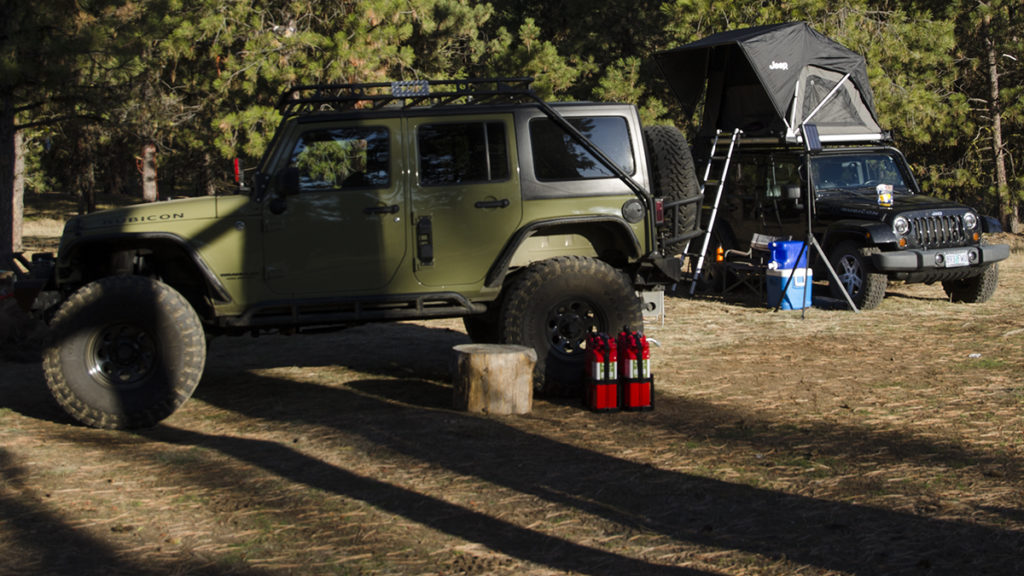
The most miserable night I can remember…
My son, Chris, and I were making a trial run with our Rubicon jeeps… we were planning to join the second annual “Burning Jeep” tour out of Brothers, Oregon, led by Casey Kaiser, whose jeep burned to the ground in a spectacular fashion while he was on a solo camping trip. You can find his incredible story elsewhere on YouTube.
Last minute jeep repairs jinxed our joining the Burning Jeep tour, so we decided to visit our former hunting camp near Seneca and look for a very large tree we remembered from ten or fifteen years ago.
My father joined his brothers on a hunting trip to Seneca in 1933. “Going to Seneca” were magical words for me. I begged to go every year after I was old enough to walk… Dad gave me a goal… I had to be as tall as his shirt pocket. I stretched every day… I made my first trip to Seneca at age nine. My sons were the third generation to hunt at Seneca… where they got to listen to Grandpa and Grandma tell hunting stories around the campfire.
I eventually gave up packing a rifle and started carrying a camera… using my hunting skills to photograph wildlife. I still head for those ancestral hunting grounds annually… choosing to avoid the hunting seasons… enjoying many great memories… making new ones. This trip had promise. It was our first driving the Jeep Rubicon.
We stopped in Prineville to top off the fuel tanks… then had a late lunch/dinner at the Tastee Treet… hamburger, fries and a 20-ounce vanilla milkshake made a hearty meal and provided more calories than I needed for a day of driving.
When we turned off from the paved highway, we noticed patches of snow roadside… a harbinger of temperatures to come. The elevation where we were headed ranges from 5,500 – 6,000 feet. For a comparison, Timberline Lodge on Mount Hood stands at 6,000 feet. If there is snow at Timberline there will be snow at our hunting camp. There was snow at Timberline… Mount Hood wore a fresh mantle of white.
There is snow in the shadows at camp… the ground is frozen as hard as concrete… winter jackets and wool gloves keep us warm while the sun is shining but it will get much colder during the night. We take a brief tour of the camping area… toting our trash bags and picking up trash the former occupants left behind.
Our traditional campsite is on the edge of a large meadow… Quaking Aspen surround the meadow… leaves trembling in the slightest wind… shining a brilliant gold… reflecting the autumn sun. We have seen herds of elk feeding in that meadow… deer were also frequent visitors. Coyotes come to mouse. It is a delightful place to camp and watch the faces of nature.
Other groups camp here too… mostly hunters… we are between deer and elk season, so during our stay we have the woods to ourselves. I grumble about how others treat our sacred campground… they butcher the animals they kill and leave the parts they don’t use… they also leave their garbage for us to pick up and pack out… dumping their holding tanks as a final insult before departing.
Within minutes of our arrival a brilliant blue Steller’s Jay checked us out… it landed on a limb above our heads, scolding us raucously for intruding… then a pair of Gray Jays, aka Camp Robbers, looked to see if any unattended food was present… leave your lunch for a minute and it will be gone when you return… guaranteed. A couple Least Chipmunks made a more cautious approach, but no snacks were offered, and they departed.
Ponderosa Pine is the primary forest tree here although some Lodgepole Pine mixes in… White Fir, Douglas Fir and Tamarack also grow on the north facing slopes… Juniper and Mountain Mahogany are understory trees… Quaking Aspen mark wet ground, creek banks and springs… ancient lava flow rimrocks line the edges of steep canyons. The area is in a multiple use National Forest. There is no fee for camping.
Setting up camp… the main issue is finding level ground to park our jeeps so our beds will be reasonably level … Fifty years of using this spot for a hunting camp provided memories of leveling rigs… so we were able to pull into flat spots without spending time searching for the spot just the right place to park.
The ideal strategy for jeep camping is to plan the cargo load so one doesn’t have to unload and load at every stop. Chris has a roof top tent on his 2012 Rubicon, so he doesn’t disturb internal cargo, but I elected to sleep inside my 2013 Rubicon… Consequently, I had to unload cargo from the jeep to access the bed. I’m six foot three so I folded the back seats to give me room to stretch out. The floor isn’t exactly flat like a bed but will suffice.
With my head between the front seats and my feet against the tailgate I just barely have enough room. I laid down a layer of cardboard to provide insulation from the cold metal underneath me. An air mattress softened the sleeping surface and a sleeping bag provided warmth… I tossed in a comforter in case more warmth was needed. My jacket served as a pillow.
Perfect, or so I imagined, until the thermometer dropped well below freezing. The proof of the pudding is in the eating. We were about to test our theories.
Bedtime comes early without television… gazing into a campfire is an adequate substitution but without a stack of firewood to maintain a campfire we decided to bed down soon after sunset… a lonely coyote gave us a serenade and a full moon rising through the Ponderosa pine trees on the ridge provided eerie lighting around camp. I wanted to see the night sky full of stars… the Milky Way… not available to view at home because of light pollution from the city of Portland… but the cold night air drove me to seek the warmth of the sleeping bag.
Sleep came quickly but during the wee morning hours the Jeep began to cold soak and misery set in. I began to feel like I was inside a freezer. I desperately needed heat so I decided to start the engine and turned up the heater.
The Rubicon can remote start… no need to get up… one can remain wrapped up in a sleeping bag and start the motor by pushing a button on the key fob… the engine will run for ten minutes and then shut down. I could smell exhaust gases… I worried about the risk of carbon monoxide poisoning… I gave it one trial.
Starting the jeep gave momentary relief but as soon as the engine shut down the cold returned. According to the thermometer the outside air was just below 20 degrees Fahrenheit… not unusual for October in this region. It could have been colder. It was a long night. Sunrise was a welcome sight.
Mercifully sunrise and hot coffee cured the problem.
Chris did better… his rooftop tent worked well and kept the cold at bay.
Our goal for the day was to find the big tree… maybe a champion for Oregon… so we set out to explore… we did some jeep road touring… some hiking… no big tree. Trees in the area had been thinned so perhaps the big tree is history.
We decided to stay one more night… I briefly considered sleeping on the ground… I have done that in the past with success… but the ground was as hard as concrete, indicating it was still frozen. I elected to sleep inside the jeep again but this time I put the comforter on top of the cardboard and the sleeping bag on top of the comforter… that combination was warmer, and I slept more soundly. However, the weather also warmed 10-15 degrees, so it wasn’t a fair test.
When morning came, we packed our gear for the drive home. We managed our departure so we could include one more hamburger with fries at the Tastee Treet in Prineville.
Despite the misery of a cold night for me, we enjoyed our adventure. We came home with ideas for an improvement for my sleeping situation.
We researched the Internet for options and noticed no one demonstrates the effort it takes to get in and out of a bed inside the jeep.
Sleeping inside a jeep is not for everyone. I am in my eighties and not as nimble or limber as I once was… I need to get up several times during the night… maybe three times before daylight. I found sleeping at floor level in the jeep unsuitable. Getting up is a chore.
Chris thought I should try his rooftop tent but I decided managing a rooftop tent wasn’t for me.
I plan to raise the bed inside my jeep to sitting height so getting up from bed is easier… A foam pad instead of an air mattress may make a big difference in heat transfer. In my imagination I will sleep much warmer.
Before departing on a camping trip, it makes sense to try sleeping in your jeep at home… where you have alternatives… do not leave comfort to your imagination… If your jeep bed isn’t comfortable you can retreat to your regular bed and rework your plan.
Bon Voyage
ByLarry
Related Images:
Setting land speed records on the Alvord Desert
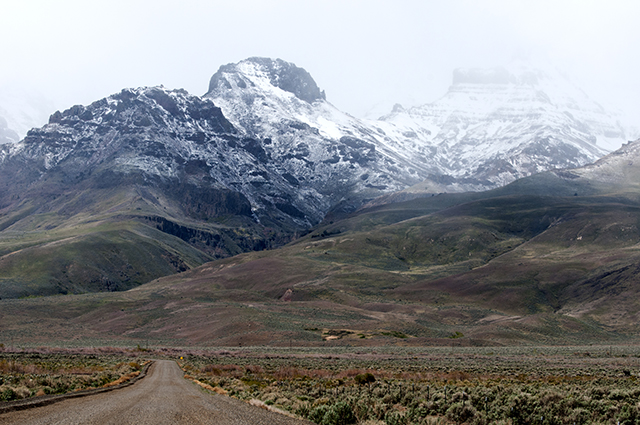
Tires grumble in the gravel… no pavement found here…
Too far from civilization say highway commissioners…
And best drive slowly… protect car tires from rock cuts…
Nothing worse than a flat tire… (unless it is two flat tires) …
Repair is hours away… weeks if you walk…
Behind the car… A plume of dust reaching out like a giant rooster tail…
Announcing our presence… pointing out our direction of travel…
To anything or anyone that cares…
From highway 78… we are headed south toward Fields…
And Denio… on the Oregon border shared with Nevada…
Passing between Steens Mountain and the Alvord Desert…
A classic example of basin and range topography…
A pronghorn antelope challenged our car to a race…
Easily keeping ahead of us at 30 mph… we slowly pushed to fifty…
Then he (or was it she) put on a burst… maybe a world record…
For antelopes… only the Cheetah is said to be faster… barely…
The antelope left us in the dust… we admired its pace…
Crystals of ice landing on the hood of the car… precipitation…
Flakes of snow… transformed to liquid by heat from the engine…
Evaporating into the dry air… creating dehydration and drought…
It’s cold here at 4,000 feet… 23 degrees Fahrenheit this morning in May…
Minus five degrees Celsius sounds colder… but it is not.
A mile above us… the crags of Steens Mountain range to our west…
Wrapped in swirling clouds of snow… drifting deep in winter…
The summit of Steens… 9,733 feet… warm in summer sun…
Melting snow water trickles down from the rim…
Forming a lake in the Alvord basin far below…
Once upon a time Alvord Lake was 300 feet deep…
Dare I say it, climate change evaporated the water…
Leaving salt pan… a perfect surface for setting speed records…
Dust devils spin on playa flats on the ancient lakebed…
Now called a desert… the Alvord… on our eastern flank…
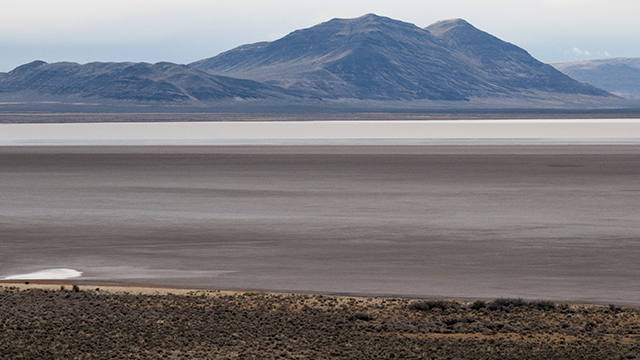
Dirt sailors delight in racing their land yachts on the salt pan…
Powered only by wind in the sails… what a blast…
Reaching a record speed of 126.2 miles per hour…
So much faster than the wind… hard to imagine.
Kitty O’Neil was here… December of 1976…
Riding a high-speed tricycle to a world’s record…
For a woman… 512.7 miles per hour on the average…
She promised not to break the record of 630.4 mph…
Set by a man… and allow a man a try for the record…
She set the power of her tricycle at 60 percent…
The woman’s record was hers… she wanted more…
She wanted a second run… with boosted power…
But the man demanded his chance…
While lawyers wrangled a snowstorm set in…
Ending time trials for the season… no chance…
For man or woman… the season was over.
The man didn’t get his tricycle ride… too bad…
Once upon a time I piloted a fighter jet across this desert…
On the deck… not touching the surface… I pushed the throttle…
afterburner blazing… what was it like at 512 miles per hour…
Breath-taking… an adrenaline rush… lakebed ripping past…
Raising a dust plume while thundering across the Alvord…
Steens Mountain began looming large… rapidly approaching…
Can’t stop… take it vertical… climbing for sky… over the top…
People at the viewpoint… looking down on the Alvord…
Startled to see a jet flash past… upside down… afterburner roaring…
Doing a victory roll… mission accomplished…
Kitty has my admiration… she is on top of the list… in 2019…
Jessica Combs, driving a jet… a F-104 Starfighter without wings…
Named the North American Eagle… A missile with a woman at the controls…
52,000 horsepower… capable of super-sonic speed… she wanted to be first…
She had her eye on the top ranking… the fastest woman on earth…
Something went wrong… no explanation yet… she died in the crash.
She died trying… she said she had no fear… she wouldn’t stop trying…
Keep on trying. Don’t be afraid… keep on trying.
It’s her epitaph.
byLarry
Additional information: https://www.landspeed.com/project/vehicle
Related Images:
Buying a Jeep Rubicon
The Rubicon
“I found a Rubicon for sale online… it’s located here in Gresham… it’s a 2013 model… It already has a roof rack and tent.”
My son has a 2012 model and has been bitten by the upgrade bug. He spends his spare time and cash looking for car parts on the internet. He has developed a fair amount of skill and numerous special tools for working on automobiles. He is working on me to join him. I drive a 1999 Chevy Blazer with 450,000 miles on the odometer… it’s due for replacement. Chevy refers to it as a 4WD, but I think that’s a bit of exaggeration. I want a real 4WD. When I shift to 4WD I want all four tires churning. The Rubicon has all the features I want including a navigation system.
“Where is it?” I asked.
“Gresham Toyota,” he replied.
I am generally opposed to buying a Jeep from anyone other than an authorized dealer. Automobiles are complicated machinery controlled by complicated computers. Having technicians that are factory trained and using genuine MOPAR parts are an advantage.
We decided to look at the Rubicon.
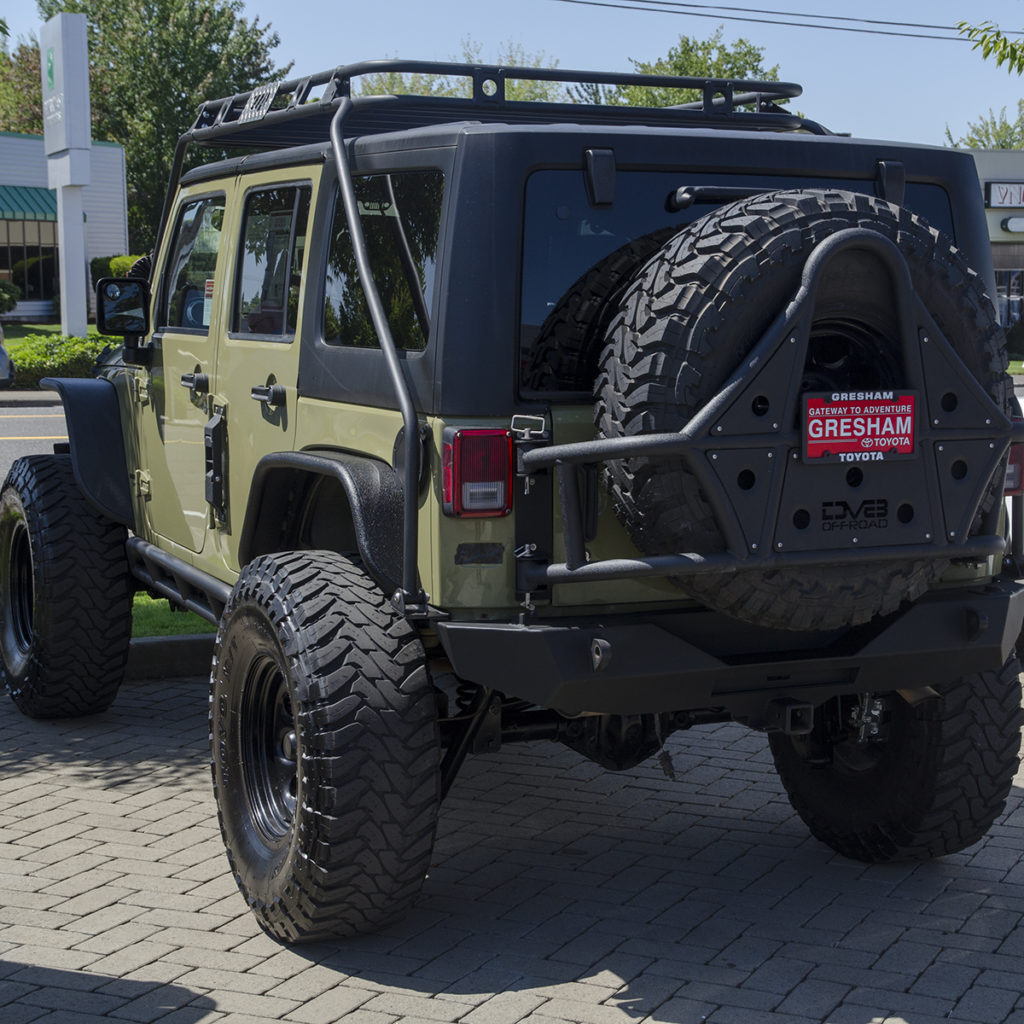
At first blink the tires appear huge. Chances are that neither you nor I can change a tire on this rig. I don’t know about you, but I have trouble climbing into this Jeep. It’s a giant leap for mankind… I need an elevator… retractable steps cost $1,700.
A second blink revealed that the Free-spirit rooftop tent had been removed. The roof rack support remained in place. I wonder about the tent… an $800 value.
The greeters… Sales Associates… rushed out to make initial contact. Friendly folks… we got to know most of the people working at Gresham Toyota while we were bartering for the Jeep.
The Jeep was priced at high Blue Book.
There were issues… we needed to negotiate.
A walk around revealed the body had about a dozen strange dents… as if it had been a target at a golf ball driving range… or at the mercy of someone with a slingshot loaded with marbles.
The Jeep is not stock; it has been modified with a 4-inch lift… 40 x 13.5-inch tires… no records for who did the work… or whether other elements had been modified too… like steering… braking… differential gears etc.
Suspension and steering appeared to be modified… no clue on the differential gearing.
The jeep travels well but a test drive indicated the speedometer wasn’t matching with GPS… the GPS was about 10 mph faster than the speedometer… the engine was struggling reaching for higher RPM.
The speed difference is significant. According to the Jeep manual If the speedometer is left uncorrected, there can be a major degradation in the performance of the Electronic Stability Program (ESP), transmission shifting, and engine performance. Whoever modified this jeep did not make the speedometer correction for the larger tires.
Some of the remote controls on the steering wheel do not function.
The cruise controls did not engage.
The navigation system: the splash page lights up but does not progress to a navigation display.
There was just one key for the Jeep. That meant another key is wandering around. I’m at the age where I keep a spare key on a cord around my neck to use when I lock the other key inside the vehicle.
CARFAX wasn’t much help for a maintenance history, but the last entry was a failure to pass a Department of Environmental Quality (DEQ) inspection. Living in Oregon with a Multnomah County address means I cannot license the vehicle or transfer the title to my name.
At this moment the Jeep is at an authorized Jeep dealer where the service department is trying to resolve the DEQ issues.
The story will continue to evolve.
ByLarry
Related Images:
Learning about Logging
Sticks and Stones Break My Bones
“Don’t stand directly in front or directly behind the machine. It throws sticks and stones.”
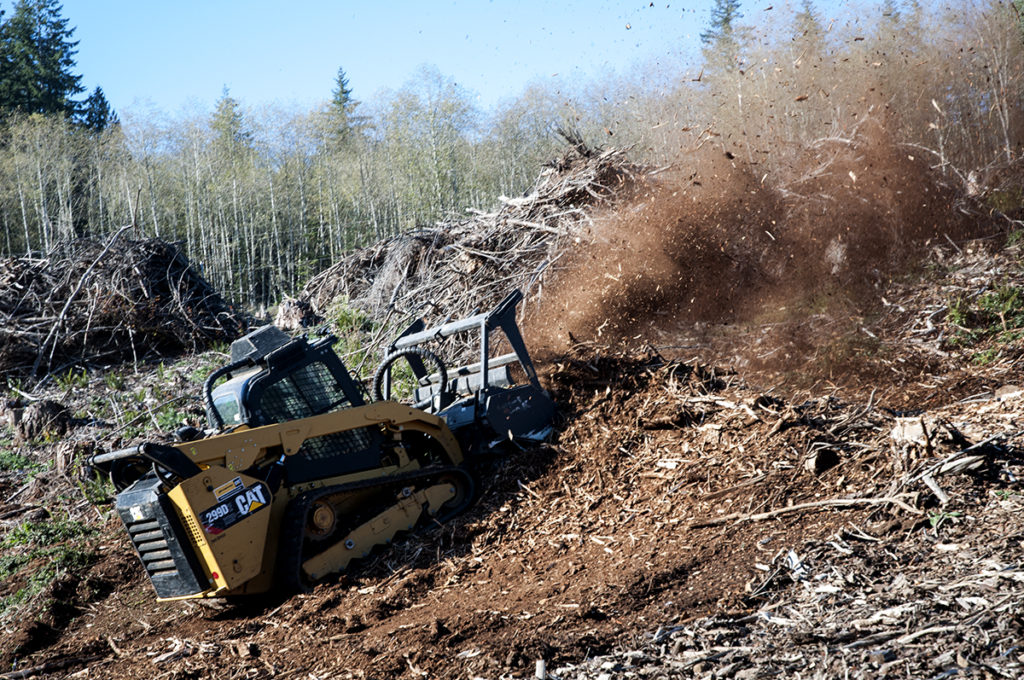
[photo by Larry]
Good advice from the operator of the mulcher who was giving us a demonstration of his forestry mulcher, a grinder powered by a 299 D2 XHP Cat.
Having recently clear-cut about ten acres of trees on my ancestral home property I face some difficult decisions. The logger stacked the slashings in preparation for burning… the standard practice but esthetically ugly.
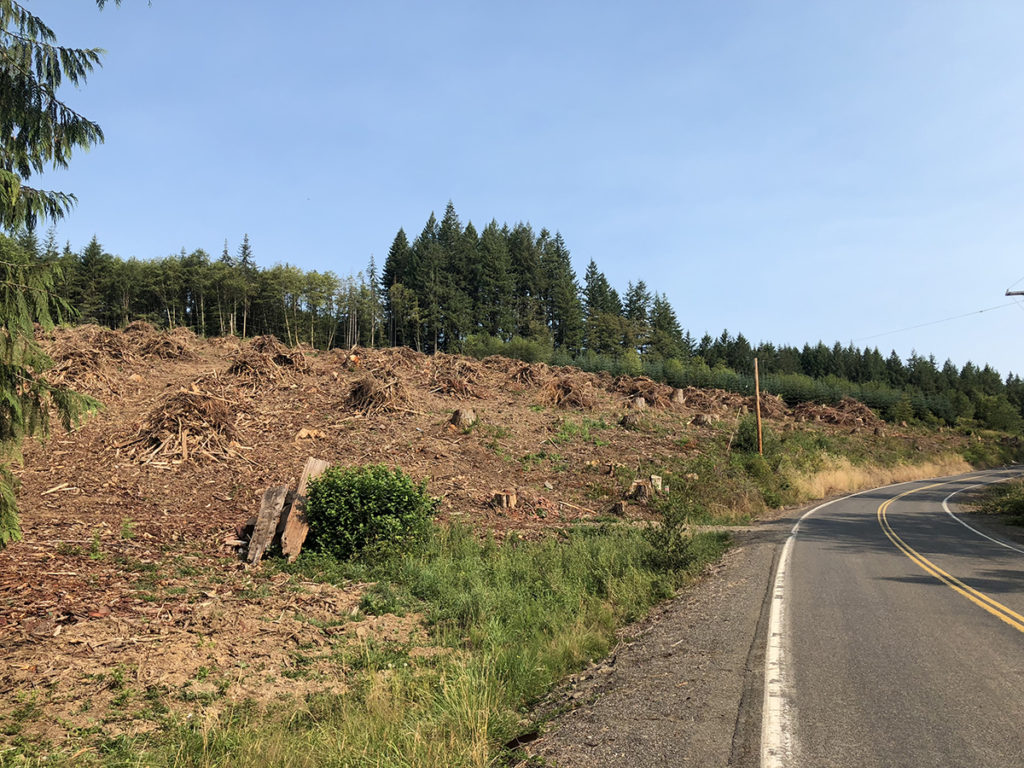
Slashing stacked for burning: [photo by Jan Jackson]
I applied to the Oregon Department of Forestry for a burn permit. The inspector counted the piles of slash (170), an estimated 700 tons of burnable material.
Burning is not a happy choice for my neighbors. Air quality suffers. The thought of seven hundred tons of greenhouse gases and particulates released into the air bothered me.
The soil suffers too. How much harm is caused is debatable.
In my younger years we cleared ground to grow strawberries… we burned stumps left by loggers in the heyday of the “cut and run” timber barons… for years after we could still see where every stump was located… our plantings would be stunted or die. Apparently the soil had been sterilized.
I am not happy with the idea of burning the slashing… polluting the air… sterilizing the soil.
A neighbor recently purchased a forestry mulcher, so he suggested an alternative option.
“Mulch the slash piles and let the organic material slowly rot into soil. It’s Nature’s way of supplying nutrients to trees.”
I have already paid the expense for having the slash stacked. Mulching is relatively expensive. Big mulching machines cost big money… operators cost big money … I’m a small forestry operator. Ten acres is a drop in the ocean of forest land. I don’t reduce costs by operating in volume. My “renewable” forest is forty years away. I will be long dead and gone.
The economics of “cut and run” are appealing. The next generation will bear the burden of what I do. I won’t be around to see another forest growing on my land, but I am around to see the piles of slash mar the scenery. I feel an obligation to use best practices, restore the forest and remove the ugly stuff.
Replanting the trees is required… that’s not an issue… removing the slash is the issue. I can mulch, burn or I can leave the piles of slash and plant trees around them. Ten years from now the piles will not be visible. Eventually the slash will rot into the ground. The nutrients will be slowly added to the soil instead of rapidly released by fire.
The question is: what is the best practice?
No one is willing to state the best practice at this point… so, what I do is up to me and my conscience.
“Be not the first to try the new or the last to lay the old aside.” Alexander Pope
What would you do?
Stay tuned for the big decision.
Consult with Fern Hill Land Clearing About Mulching
For more information about soil nutrient chemistry Click here.
For another solution read about BioChar on CountryTravelerOnline:
Story ByLarry

